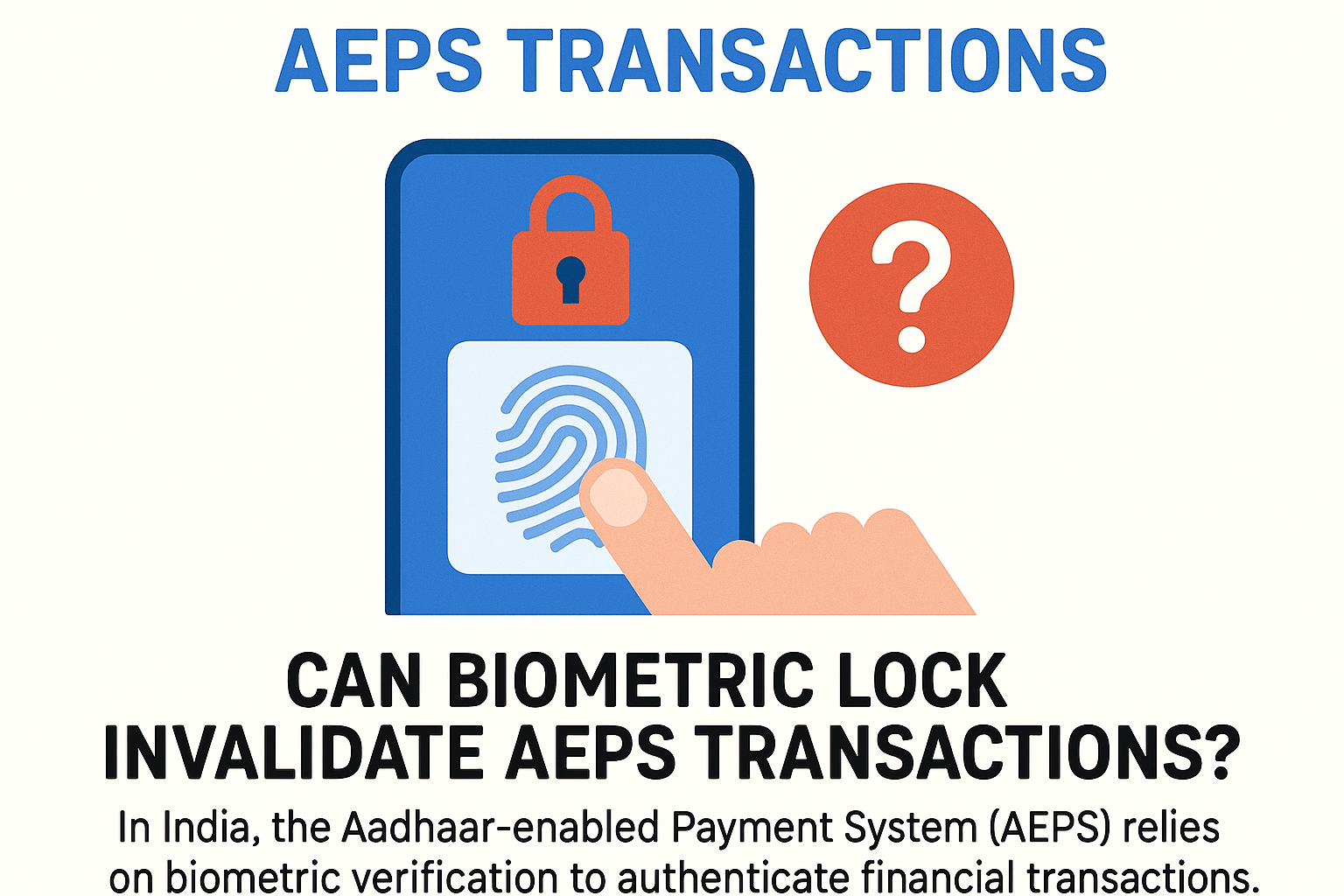Biometric authentication has revolutionized how we access services, from unlocking smartphones to (Biometric Lock) authorizing bank transactions. In India, the Aadhaar-enabled Payment System (AEPS) relies heavily on biometric verification to facilitate seamless financial transactions. But what happens when you enable Biometric Lock on your Aadhaar? Can biometric lock invalidate AEPS transactions? Let’s dive deep into UIDAI’s guidelines, exceptions, and practical implications.
Understanding AEPS and Biometric Lock
What Is AEPS?
The Aadhaar-enabled Payment System (AEPS) is a bank-led model that allows Aadhaar-linked transactions using fingerprint or iris authentication. It enables:
-
Cash withdrawals
-
Balance checks
-
Fund transfers
-
Aadhaar Pay
Since AEPS relies on biometric verification, any restriction on biometric access—like the Biometric Lock feature—could potentially disrupt transactions.
What Is Biometric Lock?
UIDAI introduced Biometric Lock/Unlock as a security feature to protect Aadhaar holders from unauthorized biometric usage. When enabled:
-
Your fingerprint/iris data is temporarily blocked.
-
No entity (banks, government agencies, etc.) can access your biometrics for authentication.
-
You must unlock your biometrics before using AEPS or other Aadhaar-based services.
Does Biometric Lock Invalidate AEPS?
Yes, enabling Biometric Lock will temporarily block AEPS transactions. Since AEPS requires live biometric authentication, locking your Aadhaar biometrics prevents banks from verifying your identity, making transactions fail.
UIDAI’s Official Stand
According to UIDAI:
-
Biometric Lock does not delete or permanently disable biometrics—it’s a temporary security measure.
-
AEPS will not work until you manually unlock your biometrics via the UIDAI website or mAadhaar app.
-
OTP-based authentication (not biometric-dependent) remains unaffected.
Exceptions Where AEPS May Still Work
While biometric lock generally blocks AEPS, there are rare exceptions:
-
If the lock was recently applied, some banks may still process cached biometric data for a short period.
-
Incorrect lock status due to sync delays between UIDAI and banking systems.
-
Bank-specific policies—some institutions may allow OTP fallback (though AEPS primarily relies on biometrics).

How to Use AEPS with Biometric Lock Enabled
If you need to perform an AEPS transaction but have locked your biometrics, follow these steps:
-
Unlock Biometrics Temporarily
-
Visit the UIDAI website or use the mAadhaar app.
-
Navigate to “Lock/Unlock Biometrics”.
-
Authenticate with an OTP and disable the lock.
-
-
Complete Your AEPS Transaction
-
Once unlocked, your biometrics will be accessible for 10 minutes by default.
-
Perform your transaction within this window.
-
-
Re-lock Biometrics (Optional)
-
For security, re-enable the lock after completing your transaction.
-
Why Would Someone Use Biometric Lock?
Despite the inconvenience, users enable Biometric Lock for:
-
Preventing Aadhaar misuse (e.g., fraudulent withdrawals).
-
Extra security if they suspect biometric data breaches.
-
Privacy concerns—limiting unnecessary biometric access.
Expert Recommendations
-
Use Biometric Lock only when necessary—frequent locking/unlocking can be cumbersome.
-
Monitor bank alerts to detect unauthorized AEPS attempts.
-
Combine with Aadhaar Virtual ID (VID) for added security.

Frequently Asked Questions (FAQs)
1. Can I use AEPS if my Aadhaar biometrics are locked?
No, AEPS requires live biometric authentication, which is blocked when Biometric Lock is enabled.
2. How long does it take to unlock biometrics?
The unlock is instant, but biometrics remain accessible for only 10 minutes before auto-locking again.
3. Does Biometric Lock affect Aadhaar OTP services?
No, OTP-based authentication (e.g., e-KYC, Aadhaar linking) works independently of biometric lock.
4. Can someone bypass Biometric Lock for AEPS?
No, UIDAI’s system enforces the lock strictly. Only manual unlocking restores access.
5. Is Biometric Lock permanent?
No, it’s a temporary feature that you can enable/disable anytime.
Conclusion
Biometric Lock is a powerful security tool, but it directly impacts AEPS transactions. If you rely on Aadhaar-based payments, remember to unlock your biometrics before using AEPS and re-lock them afterward for safety. UIDAI’s system ensures that you remain in control, but balancing convenience and security is key.
By understanding these nuances, you can safeguard your Aadhaar data without disrupting essential financial services.
Disclaimer
This article is for educational purposes only. For official guidelines, refer to UIDAI’s website. If you have any concerns regarding this content, please visit our DMCA page for removal requests. Verify ownership or issues before proceeding.
